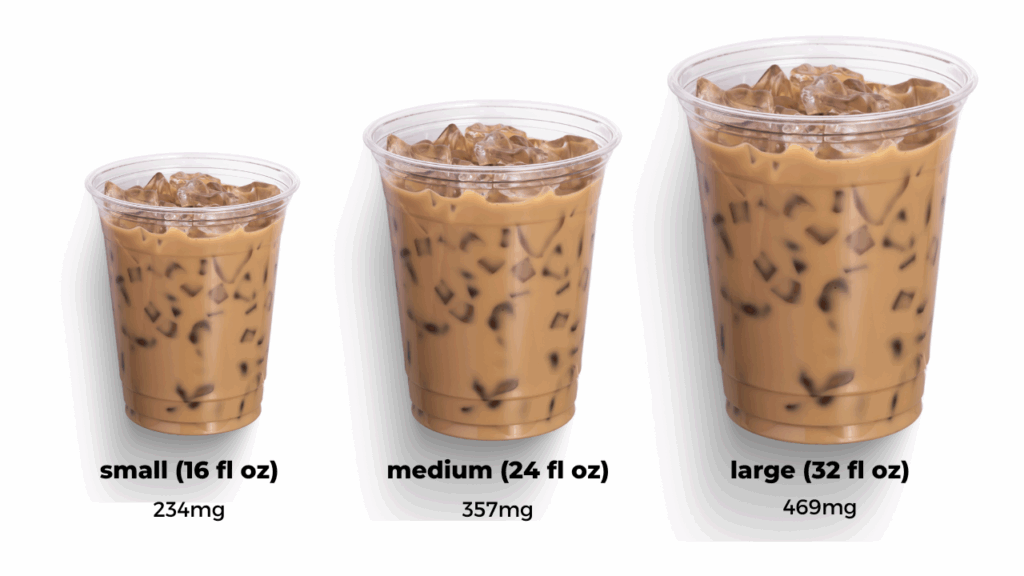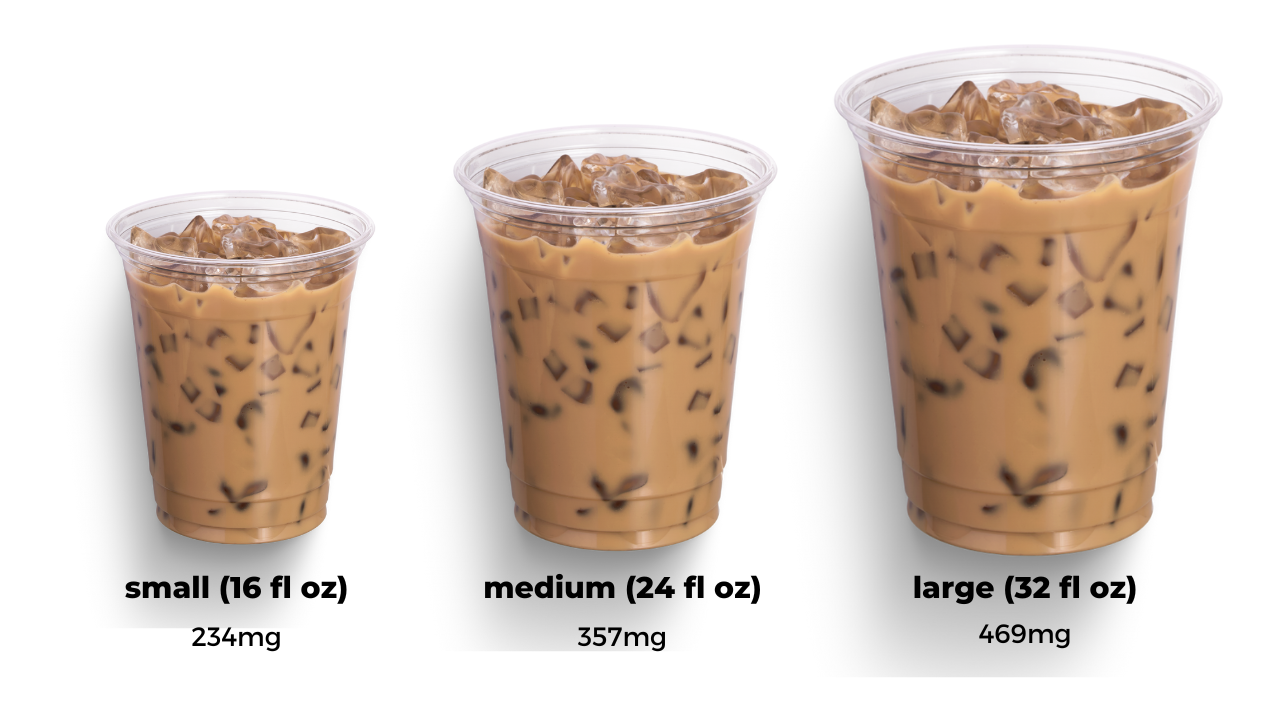
Dunkin’ Coffee Caffeine Content: What You Need to Know
For many, the morning isn’t complete without a cup of coffee. And for a significant number of coffee drinkers, that cup comes from Dunkin’. But beyond the comforting aroma and familiar flavor, lies a crucial question for the health-conscious consumer: how much caffeine is in Dunkin coffee? This article provides a comprehensive look at the caffeine levels in various Dunkin’ beverages, helping you make informed choices about your daily caffeine intake.
Caffeine, a naturally occurring stimulant, is a staple in the modern world. It’s the pick-me-up that fuels productivity, combats fatigue, and enhances alertness. However, understanding the caffeine content in your favorite Dunkin’ drinks is vital. Overconsumption can lead to a range of side effects, from jitters and anxiety to insomnia and heart palpitations. This guide will explore the caffeine content in Dunkin’ coffee, factors affecting caffeine levels, and how to manage your intake effectively.
Understanding Caffeine and Its Effects
Before diving into the specifics of how much caffeine is in Dunkin coffee, it’s essential to understand caffeine’s impact on the body. Caffeine works by blocking adenosine, a neurotransmitter that promotes relaxation and sleepiness. By blocking adenosine, caffeine increases alertness and reduces fatigue. However, the effects of caffeine can vary significantly from person to person, depending on factors like metabolism, body weight, and individual sensitivity.
Common side effects of excessive caffeine consumption include:
- Anxiety and nervousness
- Insomnia
- Rapid heartbeat
- Digestive issues
- Headaches
The Food and Drug Administration (FDA) considers 400 milligrams of caffeine a day to be a safe amount for healthy adults. However, individual tolerance varies, and it’s crucial to be mindful of your own body’s response to caffeine.
Caffeine Content in Dunkin’ Coffee Varieties
The caffeine content in Dunkin’ coffee varies depending on the drink size and type. Dunkin’ offers a wide array of coffee options, each with its own caffeine profile. Understanding these differences is key to managing your caffeine intake effectively. Here’s a breakdown:
Dunkin’ Hot Coffee
The standard brew at Dunkin’ is a popular choice. The caffeine content in Dunkin’ hot coffee is as follows (approximate values):
- Small (10 oz): Approximately 150mg
- Medium (14 oz): Approximately 200mg
- Large (20 oz): Approximately 300mg
- Extra Large (24 oz): Approximately 350mg
These figures are estimates, and the actual caffeine content can vary slightly depending on brewing methods and the specific blend of coffee used. Dunkin’ uses a blend of Arabica coffee beans, which generally have a moderate caffeine level.
Dunkin’ Iced Coffee
Iced coffee is a refreshing alternative, especially during warmer months. The caffeine content in Dunkin coffee, specifically iced coffee, is similar to hot coffee, but can be slightly different due to the brewing process and ice dilution. Here’s the approximate caffeine content:
- Small: Approximately 166mg
- Medium: Approximately 228mg
- Large: Approximately 318mg
- Extra Large: Approximately 400mg
It’s worth noting that the addition of milk, cream, or sweeteners does not affect the caffeine content.
Dunkin’ Cold Brew
Cold brew coffee, known for its smooth, less acidic taste, often has a higher caffeine content than hot or iced coffee. The cold brewing process extracts more caffeine from the coffee grounds. The caffeine in Dunkin’ coffee cold brew is:
- Small: Approximately 200mg
- Medium: Approximately 300mg
- Large: Approximately 350mg
If you’re sensitive to caffeine, be cautious with cold brew.
Espresso-Based Drinks
Espresso-based drinks, such as lattes, cappuccinos, and macchiatos, contain a concentrated dose of caffeine due to the espresso shots. The caffeine content in Dunkin coffee, specifically in espresso drinks, depends on the number of shots:
- Single shot of espresso: Approximately 75mg
- Double shot of espresso: Approximately 150mg
The addition of milk or flavorings doesn’t alter the caffeine levels significantly. Therefore, a latte with two shots of espresso will contain approximately 150mg of caffeine, plus the caffeine from the coffee used.
Factors Influencing Caffeine Content
Several factors can influence the caffeine content in Dunkin coffee. Understanding these factors can help you make more informed choices:
Type of Coffee Bean
Arabica beans, the primary type used by Dunkin’, generally have a moderate caffeine content. However, the specific blend and roast level can influence the final caffeine levels. Darker roasts often have slightly less caffeine than lighter roasts, as some caffeine is lost during the roasting process. However, the perceived strength of the coffee is often greater in darker roasts, as the roasting process brings out more of the coffee’s flavor.
Brewing Method
The brewing method significantly impacts caffeine extraction. Cold brew, as mentioned earlier, extracts more caffeine than traditional brewing methods. Espresso machines use high pressure to extract a concentrated caffeine dose. The brewing time can also influence the final caffeine content. Longer brewing times generally extract more caffeine.
Drink Size
The most obvious factor is the drink size. Larger drinks naturally contain more caffeine because they use more coffee grounds or espresso shots. This is a key consideration when choosing your drink size at Dunkin’.
Managing Your Caffeine Intake at Dunkin’
Knowing how much caffeine is in Dunkin coffee is just the first step. The next step is to manage your caffeine intake effectively. Here are some tips:
Read the Menu Carefully
Pay attention to the drink descriptions and caffeine information, if available. Dunkin’ often provides caffeine content information on its website or in-store. If you’re unsure, don’t hesitate to ask a Dunkin’ employee.
Choose Your Size Wisely
Opt for smaller sizes if you’re sensitive to caffeine or want to limit your intake. A small coffee can still provide a satisfying caffeine boost without overwhelming your system.
Consider Decaf Options
Dunkin’ offers decaffeinated coffee and espresso drinks. This is an excellent option if you want the taste and ritual of coffee without the caffeine. Decaf options still contain a small amount of caffeine, but significantly less than regular coffee.
Monitor Your Intake Throughout the Day
Be mindful of how much caffeine you’re consuming throughout the day. Avoid drinking coffee late in the afternoon or evening to prevent sleep disturbances. Consider tracking your caffeine intake to better understand your body’s response.
Listen to Your Body
Pay attention to how your body reacts to caffeine. If you experience jitters, anxiety, or other side effects, reduce your caffeine intake or switch to a decaf option. Everyone’s tolerance is different, so it’s essential to listen to your body’s signals.
Comparing Dunkin’ to Other Coffee Chains
When considering how much caffeine is in Dunkin coffee, it is helpful to compare it to other popular coffee chains. Caffeine levels can vary significantly between different brands. [See also: Coffee Chain Caffeine Comparison]
Starbucks
Starbucks is known for its strong coffee. The caffeine content in Starbucks coffee is often higher than in Dunkin’s offerings. For example, a grande (16 oz) brewed coffee at Starbucks contains approximately 310mg of caffeine, compared to approximately 200-300mg in a similar-sized Dunkin’ drink. Espresso-based drinks at Starbucks also tend to have slightly higher caffeine levels.
McDonald’s McCafe
McDonald’s McCafe offers a range of coffee drinks. The caffeine content in McCafe beverages is generally lower than both Dunkin’ and Starbucks. A medium McCafe coffee contains approximately 100mg of caffeine. This makes it a lighter option for those seeking a milder caffeine experience. [See also: McDonald’s Coffee Caffeine Content]
Factors in Comparison
When comparing caffeine levels across different coffee chains, consider the following:
- Coffee Bean Type: Different bean types and blends influence caffeine content.
- Brewing Methods: Brewing techniques vary, impacting caffeine extraction.
- Serving Sizes: Serving sizes differ, so be sure to compare like-for-like sizes.
Conclusion: Making Informed Choices About Your Dunkin’ Coffee
Understanding how much caffeine is in Dunkin coffee is crucial for making informed choices about your daily caffeine intake. By knowing the caffeine content of various Dunkin’ drinks, you can manage your consumption effectively and avoid unwanted side effects. Remember to consider your individual tolerance, pay attention to your body’s signals, and choose options that align with your health goals. Enjoy your Dunkin’ coffee responsibly and savor the flavor!
By understanding the caffeine content of your favorite Dunkin’ drinks, you can make informed choices that support your well-being. Enjoy your coffee responsibly, and stay energized!


